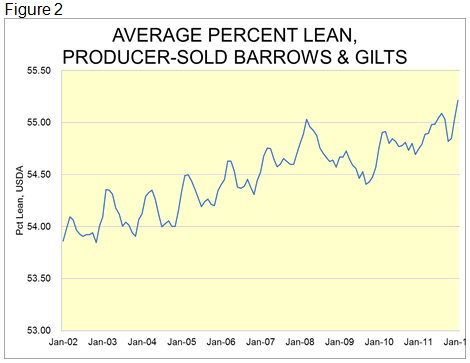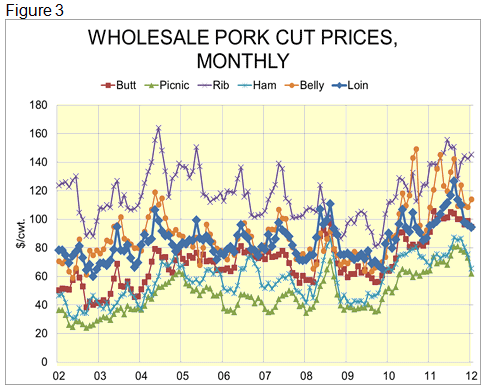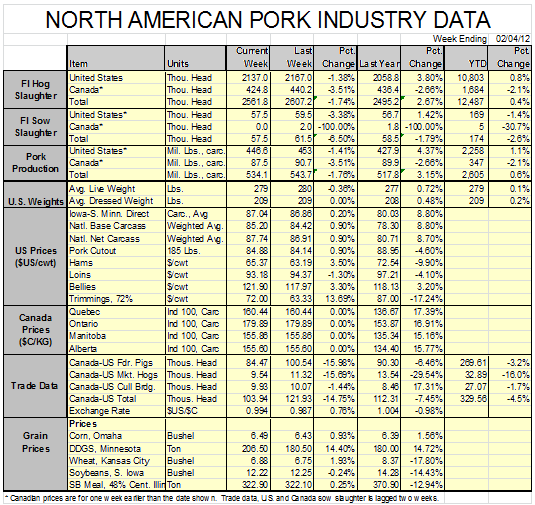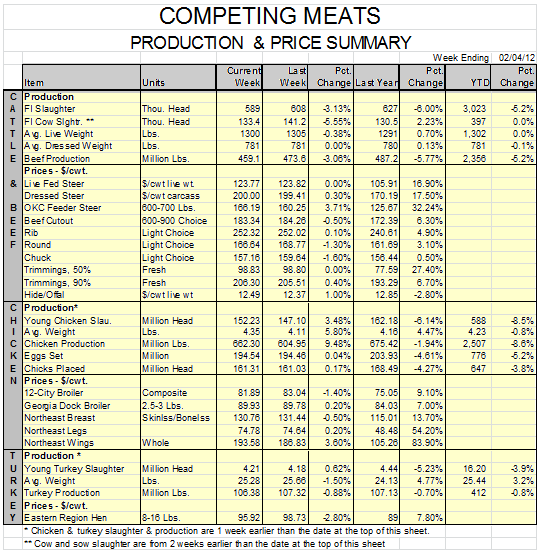



Bigger, Leaner, Better Hogs Coming to Market
US - We like our sayings in threes. Blood, sweat and tears. Mo, Larry and Curly. I believe a three-word phrase also describes the market hogs of the past few years: Bigger, leaner, better, writes Steve Meyer in this week's "Market Preview" featured in National Hog Farmer magazine.Following are the reasons I chose those descriptors.
First, "bigger" is pretty much a no-brainer. Hog carcass weights have gained from an average of 186 lb. in 1986 to 205 lb. last year. That’s a 19-lb. gain in 25 years. The growth of barrow and gilt carcass weights has been even more striking, moving from 170 lb. in 1986 to 203 lb. last year – 33 lb. in 25 years. Death, taxes and 1% heavier hogs are all pretty good bets.

There are lots of good reasons for this shift to heavier weights. Genetic improvement for growth rate and leanness is a key one, but the true incentive is still the fact that the buildings at both the producer and packer levels hold "heads" of animals and the businesses sell "pounds" of product. The best way to improve efficiency is obviously to increase pounds per head. Producers and packers spread fixed and quasi-fixed costs, such as labor (which cannot be cut quickly and then added back because workers have a nasty habit of taking work elsewhere or just plain leave) over more and more units of output.
The only thing that has slowed this inexorable climb has been three episodes of high feed costs. The first two episodes were short-lived and weight increases commenced anew when costs returned to normal levels. But the most recent one has been a shift to a much higher "new normal" level and it appears that we are shrugging it off and continuing to increase hog weights. Improved genetics are a big part of that, but higher prices are now covering the higher per-unit production costs. And, the shift to wean-to-finish barns over the past few years has likely allowed floor space adjustments to handle those heavier hogs.
"Leaner" is another watchword. Figure 2 shows the progress based on data from the USDA’s mandatory price reporting system. That steady progress was slowed only as the adjustment to higher feed prices was made in 2008 and 2009, when energy levels in hog diets were low due to high corn and fat costs. They have shot upward recently with the average of producer-sold pigs hitting 55.2% lean in December.

The "better" part of the phrase may be debatable. I have harped on problems with muscle quality for some time. I still don’t think the problem has been solved, but last year’s pork cut prices are encouraging. That is particularly true for loins which set new records and kept up with other cut prices where they have, on many occasions in the past, lagged. Bellies and butts had a great run last year due to exports and more developments for those cuts in foodservice usage. But they didn’t leave loins behind even at a time when chicken was very cheap in grocery stores.

What is in store? My prediction is "heavier, leaner and better yet." Producers must spread fixed costs and breeders are bringing them hogs that they can make heavier while still keeping them lean. I think everyone is paying more attention to muscle quality, so I hope it will not suffer as other traits are improving. There is some concern about fat quality, but clear communication and careful attention can solve those challenges, too.









